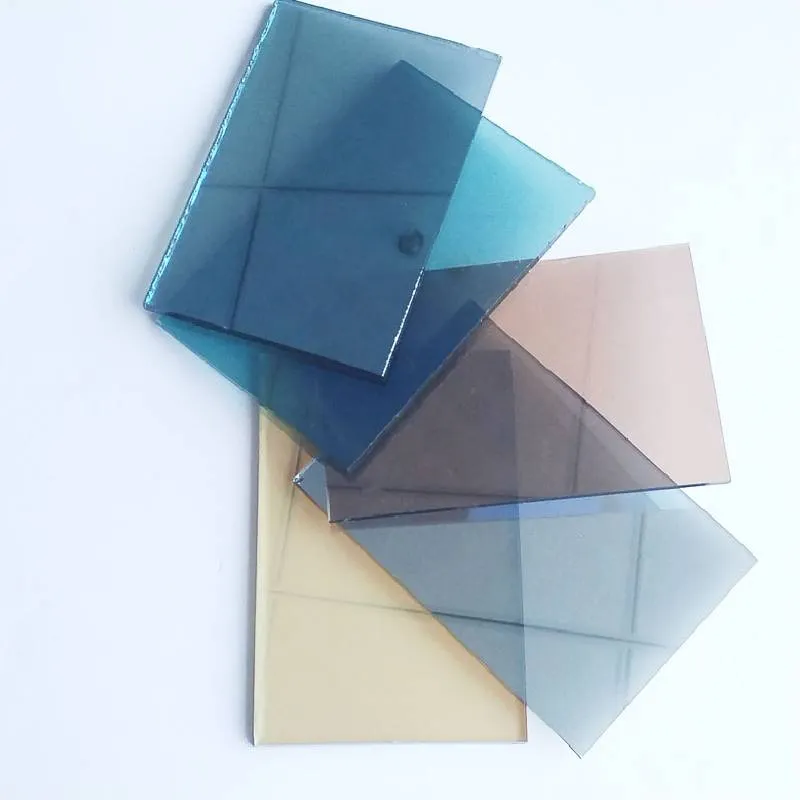Clear Glazing Enhancing Aesthetics and Functionality in Modern Architecture
Clear glazing has become an essential element of contemporary architecture, offering a seamless blend of aesthetic beauty, environmental sustainability, and functional performance. Widely utilized in residential, commercial, and industrial buildings, clear glazing refers to the transparent sheets of glass that allow natural light to penetrate interiors while providing unobstructed views of the outside world. This article explores the benefits, applications, and advancements associated with clear glazing in modern design.
One of the primary advantages of clear glazing is its ability to maximize natural light in living and working spaces. Natural light has been proven to enhance mood, increase productivity, and improve overall well-being. By incorporating clear glazing into architectural designs, builders can create bright, inviting environments that connect occupants with the surrounding landscape. This is particularly important in urban settings, where green spaces may be limited. Clear glazing serves as a link between the indoors and outdoors, allowing inhabitants to enjoy the beauty of nature from the comfort of their spaces.
Moreover, clear glazing contributes to energy efficiency in buildings. Traditional lighting consumes a significant amount of electricity, contributing to high energy bills and increasing carbon footprints. By utilizing natural daylight, buildings with clear glazing can reduce their reliance on artificial lighting during the day. Advanced glazing technologies, such as Low-E (low emissivity) coatings, can enhance energy efficiency further by minimizing heat loss and gain, thereby reducing heating and cooling costs. This combination of natural light and energy efficiency aligns with the growing demand for sustainable design practices.
In addition to its functional benefits, clear glazing offers exceptional aesthetic appeal. Architects and designers often use clear glazing to create visually striking facades that enhance the overall character of a building. The transparency of the glass allows for creative design possibilities, such as large windows, glass walls, and even entire glass structures. This modern design approach not only enhances the architectural style but also adds value to the property. Clear glazing can be combined with various framing materials, including aluminum, wood, and steel, offering versatility in style and design.
clear glazing
The applications of clear glazing are extensive. In residential settings, it is used in windows, skylights, and patio doors to create open, airy spaces that bring the outdoors in. In commercial buildings, clear glazing is often employed in storefronts and office spaces to provide visibility and attract customers while fostering a collaborative work environment. Educational institutions and healthcare facilities also benefit from clear glazing, as it creates a welcoming atmosphere that promotes learning and healing.
Furthermore, advancements in glazing technology have led to increased durability and safety in clear glazing products. Tempered and laminated glass options provide added strength, reducing the risk of breakage and enhancing the overall safety of a building. Innovations such as self-cleaning coatings and tinted glass options further improve the maintenance and energy efficiency of clear glazing systems.
As the emphasis on sustainability and aesthetic design continues to grow in the architectural landscape, clear glazing remains a cornerstone of modern architectural practices. It harmonizes functionality with style, creating spaces that are not only visually appealing but also conducive to comfort and environmental responsibility. In addition, ongoing technological advancements promise to enhance the performance of clear glazing products, ensuring that they remain a vital component in the evolution of architecture.
In conclusion, clear glazing represents more than just a trend; it is a critical component of today’s architectural ethos. By fostering a strong connection between the interior and exterior environments, promoting energy efficiency, and enhancing aesthetic appeal, clear glazing plays a pivotal role in shaping the spaces we inhabit. As we move toward a more sustainable future, the importance of clear glazing in architecture will only continue to rise, making it an integral part of modern design.
 Afrikaans
Afrikaans  Albanian
Albanian  Amharic
Amharic  Arabic
Arabic  Armenian
Armenian  Azerbaijani
Azerbaijani  Basque
Basque  Belarusian
Belarusian  Bengali
Bengali  Bosnian
Bosnian  Bulgarian
Bulgarian  Catalan
Catalan  Cebuano
Cebuano  Corsican
Corsican  Croatian
Croatian  Czech
Czech  Danish
Danish  Dutch
Dutch  English
English  Esperanto
Esperanto  Estonian
Estonian  Finnish
Finnish  French
French  Frisian
Frisian  Galician
Galician  Georgian
Georgian  German
German  Greek
Greek  Gujarati
Gujarati  Haitian Creole
Haitian Creole  hausa
hausa  hawaiian
hawaiian  Hebrew
Hebrew  Hindi
Hindi  Miao
Miao  Hungarian
Hungarian  Icelandic
Icelandic  igbo
igbo  Indonesian
Indonesian  irish
irish  Italian
Italian  Japanese
Japanese  Javanese
Javanese  Kannada
Kannada  kazakh
kazakh  Khmer
Khmer  Rwandese
Rwandese  Korean
Korean  Kurdish
Kurdish  Kyrgyz
Kyrgyz  Lao
Lao  Latin
Latin  Latvian
Latvian  Lithuanian
Lithuanian  Luxembourgish
Luxembourgish  Macedonian
Macedonian  Malgashi
Malgashi  Malay
Malay  Malayalam
Malayalam  Maltese
Maltese  Maori
Maori  Marathi
Marathi  Mongolian
Mongolian  Myanmar
Myanmar  Nepali
Nepali  Norwegian
Norwegian  Norwegian
Norwegian  Occitan
Occitan  Pashto
Pashto  Persian
Persian  Polish
Polish  Portuguese
Portuguese  Punjabi
Punjabi  Romanian
Romanian  Russian
Russian  Samoan
Samoan  Scottish Gaelic
Scottish Gaelic  Serbian
Serbian  Sesotho
Sesotho  Shona
Shona  Sindhi
Sindhi  Sinhala
Sinhala  Slovak
Slovak  Slovenian
Slovenian  Somali
Somali  Spanish
Spanish  Sundanese
Sundanese  Swahili
Swahili  Swedish
Swedish  Tagalog
Tagalog  Tajik
Tajik  Tamil
Tamil  Tatar
Tatar  Telugu
Telugu  Thai
Thai  Turkish
Turkish  Turkmen
Turkmen  Ukrainian
Ukrainian  Urdu
Urdu  Uighur
Uighur  Uzbek
Uzbek  Vietnamese
Vietnamese  Welsh
Welsh  Bantu
Bantu  Yiddish
Yiddish  Yoruba
Yoruba  Zulu
Zulu 

